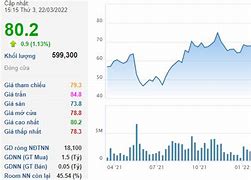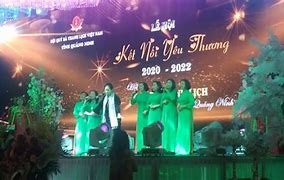
Giới Thiệu Món Bánh Mì Bằng Tiếng Anh
It is popular because of its convenience and unique taste. It consists of a toasted baguette sandwich, pickled vegetables, pate, butter, soy sauce, cilantro, chillies, and main fillings etc. The sellers usually offer a wide range of fillings which you can freely choose, such as roasted pork, fried egg, fried fish with turmeric and dill, fried sausages, Chinese barbecued pork, and poached chicken, etc. Each type of filling brings a different characteristic flavor.
It is popular because of its convenience and unique taste. It consists of a toasted baguette sandwich, pickled vegetables, pate, butter, soy sauce, cilantro, chillies, and main fillings etc. The sellers usually offer a wide range of fillings which you can freely choose, such as roasted pork, fried egg, fried fish with turmeric and dill, fried sausages, Chinese barbecued pork, and poached chicken, etc. Each type of filling brings a different characteristic flavor.
Bài mẫu giới thiệu món phở bằng tiếng Anh – bài 5
One of the Vietnamese dishes I adore is Beef Pho, a delightful rice noodle soup. Its key components include a flavorful broth, rice noodles, and thinly sliced beef. The beef can be opted for in two ways: either medium-rare or well done, and I tend to favor the well-done variation.
To enhance its taste, Beef Pho is adorned with bean sprouts, basil, anise, green onion, white onion, and coriander leaves. Additionally, some individuals prefer adding hot sauce, chili pepper, vinegar, or lime to their Pho. For optimal enjoyment, Beef Pho is best served piping hot. Its irresistible taste has made it a beloved dish among Vietnamese people.
Historically, Pho originated in Southern Vietnam before gaining popularity across the country, eventually becoming a global favorite. Beef Pho is versatile enough to be relished as a main course for breakfast, lunch, or dinner. If you get the opportunity, savor a bowl of Beef Pho without hesitation – it’s an experience not to be missed.
Một trong những món ăn Việt Nam mà tôi yêu thích là Phở Bò, một món bún thơm ngon. Các thành phần chính của nó bao gồm nước dùng đậm đà, bún và thịt bò thái lát mỏng. Thịt bò có thể được chọn theo hai cách: chín vừa hoặc chín kỹ, và tôi có xu hướng thích biến thể chín kỹ. Để tăng hương vị, phở bò được trang trí bằng giá đỗ, húng quế, hồi, hành lá, hành trắng và lá ngò.
Ngoài ra, một số người thích thêm nước sốt cay, ớt, giấm hoặc chanh vào món phở của họ. Để thưởng thức món phở bò ngon nhất khi còn nóng. Hương vị khó cưỡng của nó đã khiến nó trở thành món ăn được người Việt yêu thích. Về mặt lịch sử, Phở có nguồn gốc từ miền Nam Việt Nam trước khi trở nên phổ biến khắp cả nước, cuối cùng trở thành món ăn được yêu thích trên toàn cầu.
Phở bò đủ linh hoạt để thưởng thức như món chính cho bữa sáng, bữa trưa hoặc bữa tối. Nếu có cơ hội, hãy đừng ngần ngại thưởng thức tô phở bò – đó là một trải nghiệm không thể bỏ qua.
Giới thiệu về món mì quảng Việt Nam bằng tiếng Anh:
Quang noodles are not water noodles, or fried noodles, but mixed noodles. Noodles are usually made from many different ingredients: shrimp, chicken, pork, snakehead fish, crab… There are also vegetarian noodles for vegetarians. Depending on who likes to eat, there will be a bowl of noodles like that.
When eating noodles, it is indispensable for grilled rice paper, green chili, lemon slices, roasted peanuts and a plate of raw vegetables (water spinach, banana buds, thinly sliced young banana stalks, basil, lettuce, lettuce…).
Mì Quảng không phải là mì nước, mì xào mà là mì trộn. Mì Quảng thường được làm từ nhiều nguyên liệu khác nhau: tôm, gà, heo, cá lóc, cua… Ngoài ra còn có hủ tiếu chay dành cho người ăn chay.
Khi ăn mỳ Quảng không thể thiếu bánh tráng nướng, ớt xanh, lát chanh, đậu phộng rang và một đĩa rau sống (rau muống, đọt chuối chát, bẹ chuối non xắt mỏng, húng, xà lách, xà lách…).
Bên cạnh bánh mì, bánh cuốn, nem rán,… thì phở có thể là món ăn được nhiều người nhắc tới nhất khi nói về ẩm thực Việt Nam, rất được du khách quốc tế ưa thích. Với bài viết dưới đây, mời các bạn đến với bài mẫu giới thiệu món phở bằng tiếng Anh từ Vietop English để củng cố thêm ý tưởng khi nói đến món ăn này nhé!
Giới thiệu về món bánh mì Việt Nam bằng tiếng Anh:
Dubbed “the best sandwich in the world”, banh mi is also honored to be ranked in the Top 10 most famous and delicious Vietnamese traditional dishes.
Originating from the bread brought by France, the Vietnamese cut the loaves of bread and stuffed it with many different fillings, creating a typical Vietnamese bread, different from French bread, which used to slice and eat with buttermilk. Bread filling is very diverse: pork rolls, pork rolls, grilled pork, omelettes, sausages, sausages… however, the most famous is the bread with pate. Pâté is a pureed dish made from heated pork liver, when sandwiched with bread, it is often accompanied by raw vegetables.
Bread in Vietnam is very diverse, can be sandwiched with many different types of fillings, so each row of bread may have a different recipe and taste. Mixed bread is a cake with a mixture of many different fillings. Because of the low price, bread is often sold on the street or some shops, suitable for all classes.
Được mệnh danh là “món bánh mì ngon nhất thế giới”, bánh mì còn vinh dự lọt vào Top 10 món ăn truyền thống Việt Nam ngon nổi tiếng nhất.
Bắt nguồn từ món bánh mì do Pháp mang sang, người Việt cắt nhỏ những ổ bánh mì rồi nhồi với nhiều loại nhân khác nhau, tạo nên một loại bánh mì đặc trưng của Việt Nam, khác với bánh mì Pháp thường cắt lát ăn với bơ sữa. Nhân bánh mì Việt Nam rất đa dạng: giò heo, chả lụa, chả, trứng ốp la, xúc xích, xúc xích… tuy nhiên nổi tiếng nhất phải kể đến nhân bánh mì với pate. Pate là món ăn được làm từ gan heo được làm nhuyễn.
Bánh mì ở Việt Nam rất đa dạng, có thể kết hợp với nhiều loại nhân khác nhau nên mỗi hàng bánh mì có thể có một công thức và hương vị đặc trưng riêng. Vì giá rẻ nên bánh mì thường được bán trên đường phố hoặc một số cửa hàng, phù hợp với mọi tầng lớp.
Giới thiệu về món bánh chưng/bánh tét Việt Nam bằng tiếng Anh:
Banh chung (known as banh tet by Southerners) is a traditional dish with the oldest history in Vietnam, considered from the Hung King era, with the legend of “banh chung and banh day”.
The way to make banh chung represents Vietnamese folklore culture: Using rustic ingredients, processing with spices, stewing on fire and preserving for a long time. The raw material of banh chung, including the shell of the cake, is pounded glutinous rice; Filled with pork, green beans. Banh chung is wrapped in a square shape, inside a dong leaf or a banana leaf to have a green color. After wrapping, banh chung is boiled in water for a long time, usually sitting until it is just cooked to not be crushed, burned, but also not raw. This is the most delicate dish of banh chung, often associated with the image of children sitting and looking after banh chung all night, while watching and playing Tam Cuc during Tet. Once cooked, banh chung just needs to be peeled off and eaten. You can eat it right away or eat it with melons, onions, or palanquins.
Banh Tet in the South has a similar way but instead of a square, it is a cylinder. Many people believe that this is the original shape of banh chung, and banh chung and banh day are actually made according to the belief in gas life.
Bánh chưng (người miền Nam gọi là bánh tét) là món ăn truyền thống có lịch sử lâu đời nhất ở Việt Nam, được cho là có từ thời Hùng Vương, với sự tích “Bánh chưng, bánh dày”.
Cách làm bánh chưng tượng trưng cho văn hóa dân gian Việt Nam: Sử dụng nguyên liệu dân dã, chế biến cùng gia vị, ninh trên lửa. Nguyên liệu của bánh chưng gồm có vỏ bánh là gạo nếp giã nhỏ; Nhân thịt lợn, đậu xanh. Bánh chưng được gói hình vuông, bên trong gói lá dong hoặc lá chuối để có màu xanh tươi. Sau khi gói, bánh chưng được luộc trong nước rất lâu, thường phải người ngồi canh để bánh chín tới để không bị nát, cháy mà cũng không bị sống. Đây là món ăn thường gắn liền với hình ảnh những đứa trẻ ngồi trông bánh chưng suốt đêm, vừa xem vừa chơi Tam Cúc trong ngày Tết. Bánh chưng sau khi chín chỉ cần bóc ra và ăn. Bạn có thể ăn ngay hoặc ăn kèm với dưa, hành, kiệu.
Bánh tét ở miền Nam có cách làm tương tự nhưng thay vì hình vuông thì là hình trụ.
Bài mẫu giới thiệu món phở bằng tiếng Anh – bài 2
Phở is a delectable Vietnamese dish that is loved for its flavorful broth and tender rice noodles. To make Phở, you start by simmering beef bones or chicken carcasses with aromatic spices like star anise, cinnamon, and cloves. This slow-cooked broth is the heart of the dish and is responsible for its rich and savory taste.
While the broth is simmering, the rice noodles are cooked separately to ensure they are tender yet chewy. Once the broth is ready, it is strained and poured over the noodles in a bowl. Thinly sliced beef or chicken is added, along with fresh herbs like cilantro, Thai basil, and bean sprouts. Finally, a squeeze of lime and a drizzle of hoisin or sriracha sauce can be added for extra flavor.
The result is a steaming bowl of Phở that delights the senses with its scent, taste, and textures. It’s a comforting and satisfying dish that is enjoyed by people around the world.
Phở là món ăn ngon của Việt Nam được yêu thích bởi nước dùng đậm đà và sợi phở mềm. Để làm món Phở, bạn bắt đầu bằng cách ninh xương bò hoặc thịt gà với các loại gia vị thơm như hoa hồi, quế và đinh hương. Nước dùng nấu chậm này là trung tâm của món ăn và tạo nên hương vị đậm đà và thơm ngon của món ăn.
Trong lúc nước đang sôi, sợi bún được nấu riêng để đảm bảo sợi bún mềm và dai. Sau khi nước dùng đã sẵn sàng, lọc lấy nước và đổ vào tô mì. Thịt bò hoặc thịt gà thái lát mỏng được thêm vào cùng với các loại thảo mộc tươi như ngò, húng quế Thái và giá đỗ.
Cuối cùng, có thể thêm một chút chanh và một ít tương đen hoặc sốt sriracha để tăng thêm hương vị. Kết quả là một bát phở hấp dẫn các giác quan với mùi thơm, vị và kết cấu của nó. Đó là một món ăn an ủi và thỏa mãn được mọi người trên khắp thế giới yêu thích.






















